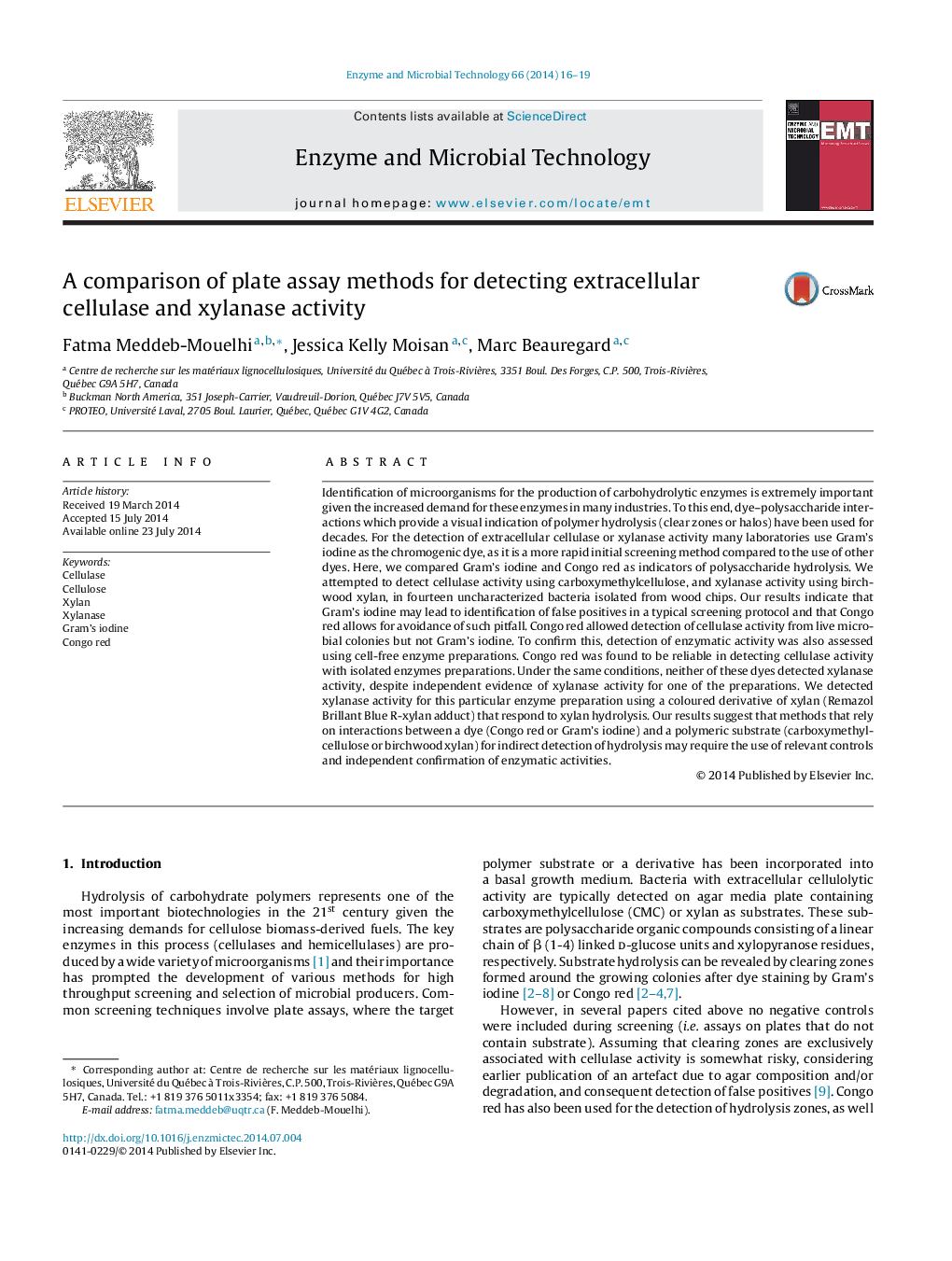| کد مقاله | کد نشریه | سال انتشار | مقاله انگلیسی | نسخه تمام متن |
|---|---|---|---|---|
| 16984 | 42629 | 2014 | 4 صفحه PDF | دانلود رایگان |
• Key biotechnology enzymes are cellulases and hemicellulase.
• Their detection involves dye-based plate assays.
• Despite limitations, these methods are widely used.
• We show that Gram's iodine is not reliable for cellulase activity detection.
• We suggest that chromogenic substrate(s) is (are) more reliable.
Identification of microorganisms for the production of carbohydrolytic enzymes is extremely important given the increased demand for these enzymes in many industries. To this end, dye–polysaccharide interactions which provide a visual indication of polymer hydrolysis (clear zones or halos) have been used for decades. For the detection of extracellular cellulase or xylanase activity many laboratories use Gram's iodine as the chromogenic dye, as it is a more rapid initial screening method compared to the use of other dyes. Here, we compared Gram's iodine and Congo red as indicators of polysaccharide hydrolysis. We attempted to detect cellulase activity using carboxymethylcellulose, and xylanase activity using birchwood xylan, in fourteen uncharacterized bacteria isolated from wood chips. Our results indicate that Gram's iodine may lead to identification of false positives in a typical screening protocol and that Congo red allows for avoidance of such pitfall. Congo red allowed detection of cellulase activity from live microbial colonies but not Gram's iodine. To confirm this, detection of enzymatic activity was also assessed using cell-free enzyme preparations. Congo red was found to be reliable in detecting cellulase activity with isolated enzymes preparations. Under the same conditions, neither of these dyes detected xylanase activity, despite independent evidence of xylanase activity for one of the preparations. We detected xylanase activity for this particular enzyme preparation using a coloured derivative of xylan (Remazol Brillant Blue R-xylan adduct) that respond to xylan hydrolysis. Our results suggest that methods that rely on interactions between a dye (Congo red or Gram's iodine) and a polymeric substrate (carboxymethylcellulose or birchwood xylan) for indirect detection of hydrolysis may require the use of relevant controls and independent confirmation of enzymatic activities.
Journal: Enzyme and Microbial Technology - Volume 66, November 2014, Pages 16–19
